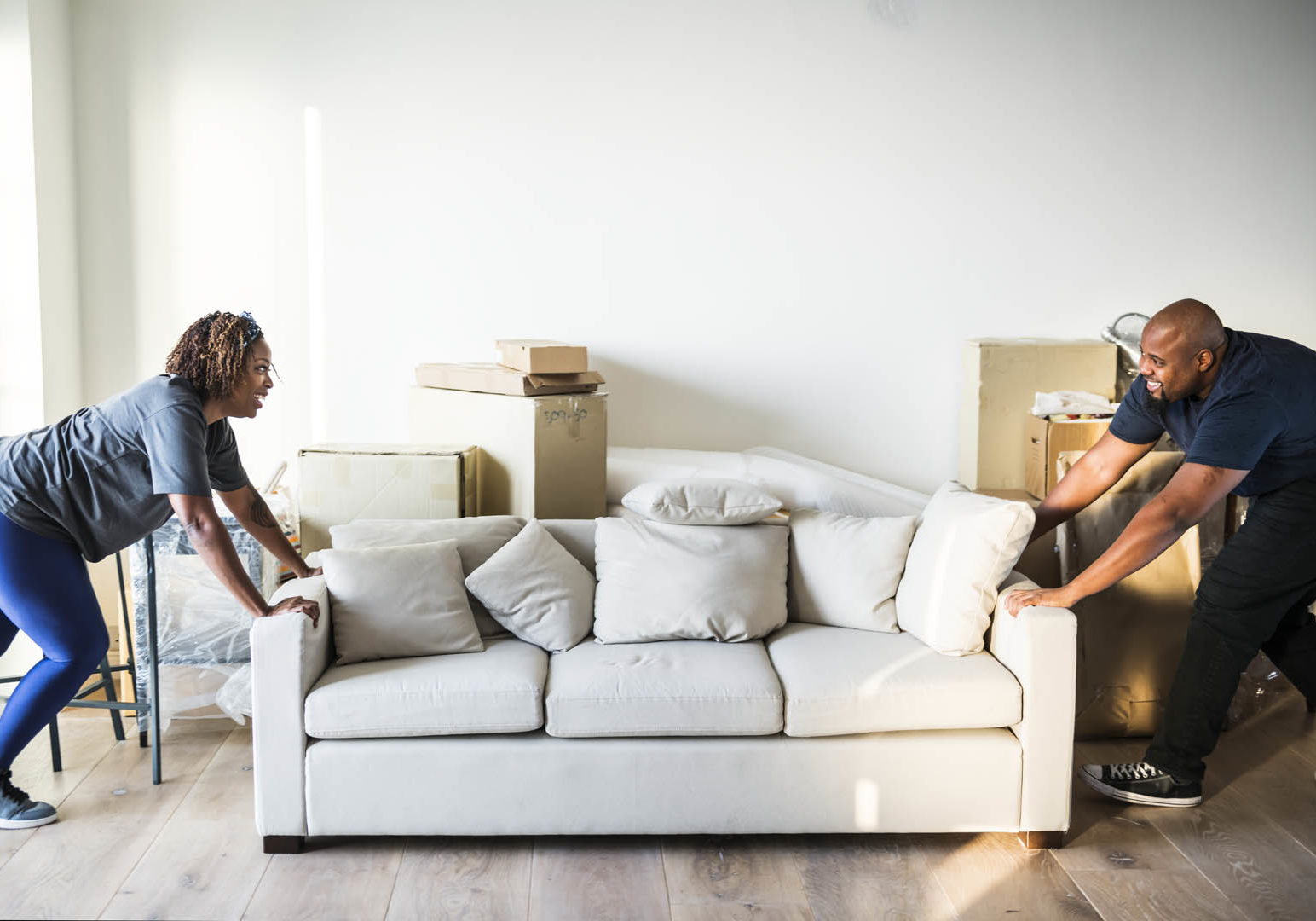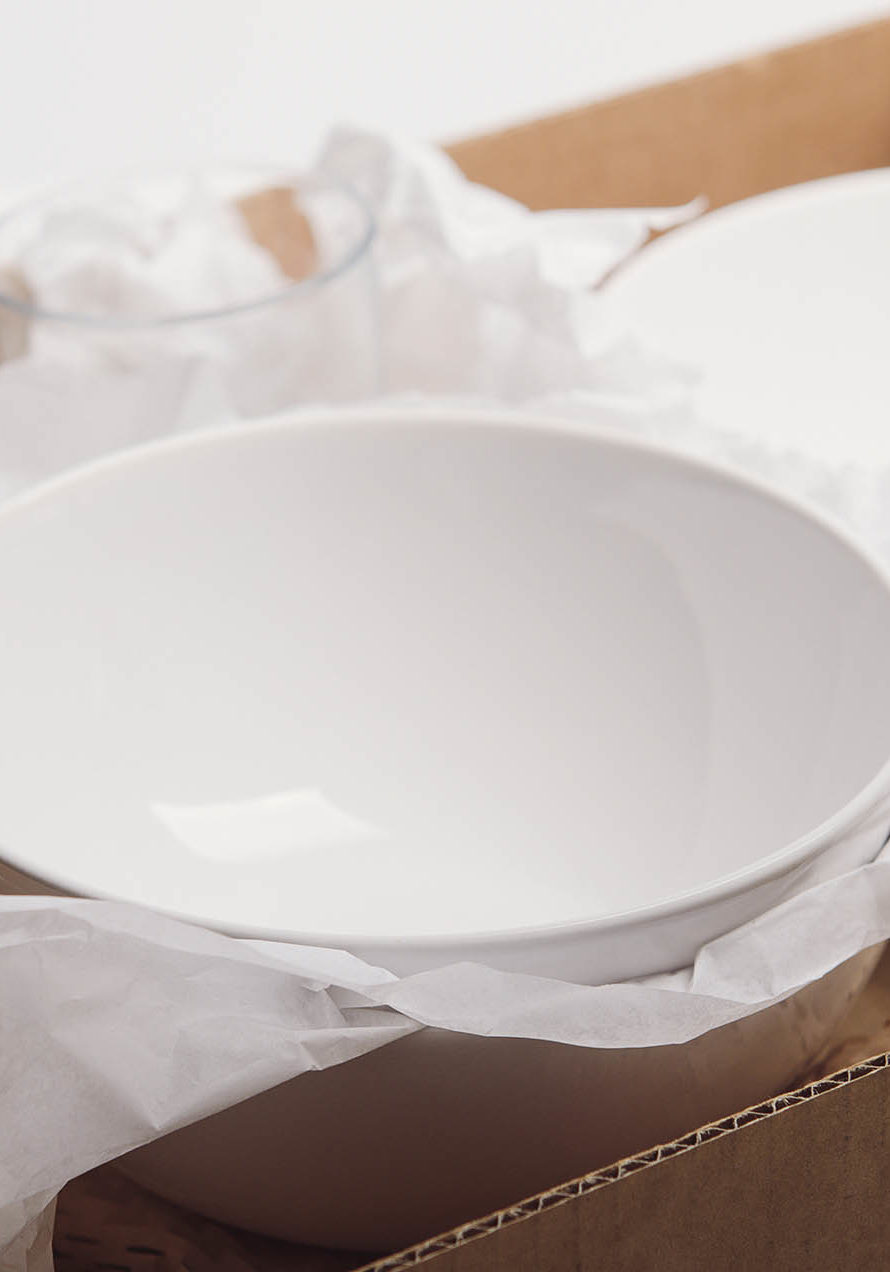Tips For A Successful Move
Good packing is essential for a successful move. If you choose to pack your personal belongings, it’s especially important that you be familiar with the equipment and techniques that will best protect your possessions. Use the links below to learn more.
Follow the simple guidelines below to ensure that your possessions are safely and securely packed for moving or storage.
MOVE CALCULATOR
Ready, Set, Pack!
Good packing means...
- Wrapping items carefully.
- Providing plenty of cushioning to absorb shock.
- Using sturdy cartons that close.
- Making sure cartons are firmly packed and do not rattle, bulge outward or bend inward.
- Not mixing items from different rooms in the same carton, when possible.
- Limiting cartons, when possible, to a maximum weight of 50 pounds to make handling easier.

Basic Checklist
Working with the Packers
Packing Cartons & Boxes
1.5 Cubic Foot Carton
Small carton is ideal for heavier items such as books and compact discs.
3.0 Cubic Foot Carton
Medium-sized carton that can be used for pots and pans,
toys and small appliances.
4.5 Cubic Foot Carton
Ideal for items such as lampshades, board games and linens.
6.0 Cubic Foot Carton
Large carton that should be used for lightweight, bulky items such as large pillows, down comforters and blankets.
Dishpack
Extra sturdy carton for fragile items including dishes, china, crystal and glassware. Carton dividers are available to provide additional protection.
Wardrobe Carton
With its included hanger bar, this large box is a convenient way to transport clothing from your closet. Could also be used to hang your draperies.
Mirror / Picture Carton
Telescoping cartons that are designed to fit almost any mirror or picture.
Mattress Carton
Available in all sizes, use this carton to protect any mattress and box spring.
*ADSI Moving Systems sells packing cartons and materials. Contact us for pricing.
You can also read our “Packing 101: Organizing and Labeling Your Boxes” blog post.
How to Pack
Lifting Safety
Stretch Out
When lifting, stand close to the item with your feet shoulder width apart, elbows tucked in, and chin down. Always lift with your legs and not your back, keeping your back as straight and as vertical as possible. Don’t twist your back while carrying items. Have an available helper to assist in lifting of heavy items. Keep a firm grip on the object using the entire hand.


Preparing Your Belongings
A Few Tips
Properly preparing your belongings before your move will help increase your chances of success and improve efficiency in the loading of the moving van. Here’s what we suggest:
- Defrost refrigerators 24-48 hours prior to loading. Hang a bag or nylon sock full of charcoal or coffee beans/grounds inside to prevent “musty” odors. Disconnect water/ice-maker lines and tape the cord to the back of the unit.
- Drain all water out of washing machines 24 hours prior to loading. Tip the washing machine backwards to drain as much water out as possible.
- Pack all trays from microwaves and glass shelves from refrigerators inside of a carton.
- Disassemble furniture such as kitchen tables, entertainment centers, bed frames/headboards/footboards, and dresser mirrors. For many, this will take more time than expected so it’s best to do prior to load day. Because of its lack of durability, furniture made of particle board material is only meant to be put together one-time, therefore, we recommend that you do not take it apart.
- Remove any shelves from furniture and place any hardware in a separate bag for reassembly at destination. Label the bag(s) for the item. Place all bag(s) in one carton for easy retrieval at destination.
- Stack or “stage” cartons based on size, in their respective rooms. Be sure that all cartons are labeled for their destination room location. Do not block doorways or walkways, as it will then be difficult to remove items during the loading process.

